Abstract
The following trends and characteristics can be seen from data on harvest yields, fruiting tree area, and shipping volumes in Japanese mandarin orange farming. The national harvest volume is expected to be 682kt in 2022, showing a relatively stable trend. The area of fruit-bearing trees nationwide also reached a record high of 36.2 kha in the same year, and active cultivation is being carried out. In terms of shipping volume, Wakayama has the highest volume at 138kt, but production volumes vary significantly from region to region. This may be due to differences in regional climatic conditions and the technical level of farmers. Overall, it can be said that Japanese mandarin farming has maintained stable production volumes while developing in each region, each with its own distinctive features and competitiveness.
Mandarin orange harvest volume (main data).
Japan’s mandarin orange harvest has changed between 1973 and 2022. At its peak in 1975, the country saw a record harvest of 3.67Mt, but the trend over the years since has been downward. The current yield is just 18.6% of its peak. There are several possible factors behind this decline. These include urbanization of agricultural land, population migration to urban areas due to rapid economic growth, and conversion of agricultural land to other fruit growing and industries. Other factors that are having an impact include abnormal weather caused by climate change and improved productivity due to advances in agricultural technology. The combination of these factors has resulted in a trend of mandarin orange yields declining from their peak.
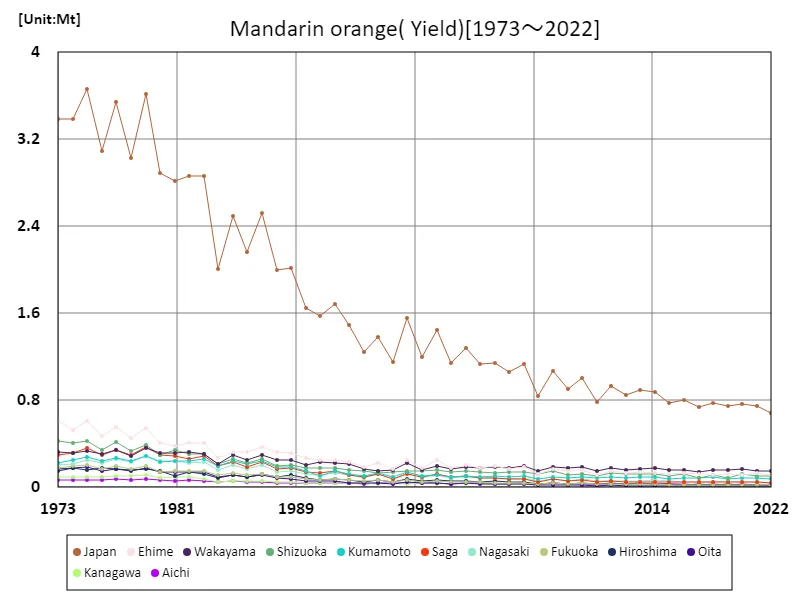

The maximum is 3.67Mt[1975] of Japan, and the current value is about 18.6%
Mandarin orange harvest volume (by prefecture).
Looking at the latest data for 2022 by prefecture on mandarin orange harvest volumes in Japanese agriculture, Wakayama recorded the highest overall yield, hitting a record high of 153kt. This is an exceptionally high figure compared to past data, suggesting that Wakayama is a major mandarin orange producing region. Even outside of Wakayama, mandarin orange production varies from region to region, but overall Wakayama has established itself as the largest producer. This characteristic is thought to be influenced by Wakayama’s climatic conditions, soil suitability, and the technical level of farmers. Additionally, high demand for mandarins and easy access to consumer markets may also be factors that give Wakayama an advantage in mandarin orange production. Overall, this shows that mandarin orange producing regions, centered around Wakayama, play a major role in mandarin orange agriculture in Japan.
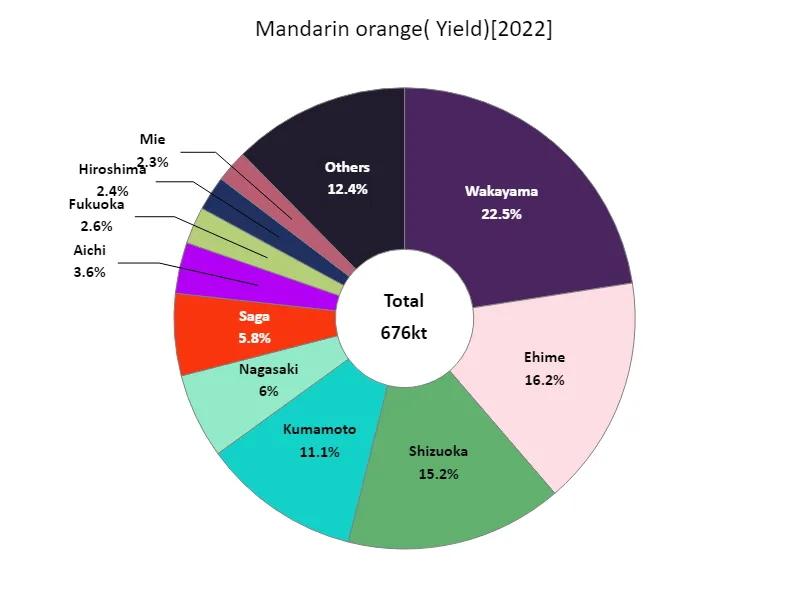

The maximum is 153kt of Wakayama, the average is 33.8kt, and the total is 676kt
Mandarin fruit tree area (main data).
The area of fruiting trees in Japan has fluctuated between 1973 and 2022. At its peak in 1975, the country had a record area of 161kha, but the trend over the years since has been decreasing. The current fruiting tree area has fallen to 22.5% of its peak. There are several possible reasons behind this decline. These include the urbanization of agricultural land, population migration to urban areas due to rapid economic growth, and conversion of agricultural land to other crops and industries. In addition, the aging of mandarin orange farmers, a lack of successors, and a shortage of agricultural labor may also be contributing factors. The combination of these factors has resulted in a trend in which the area of fruiting mandarin trees has been declining since its peak. In these circumstances, there is a clear need for sustainable agricultural policies and technological innovation.
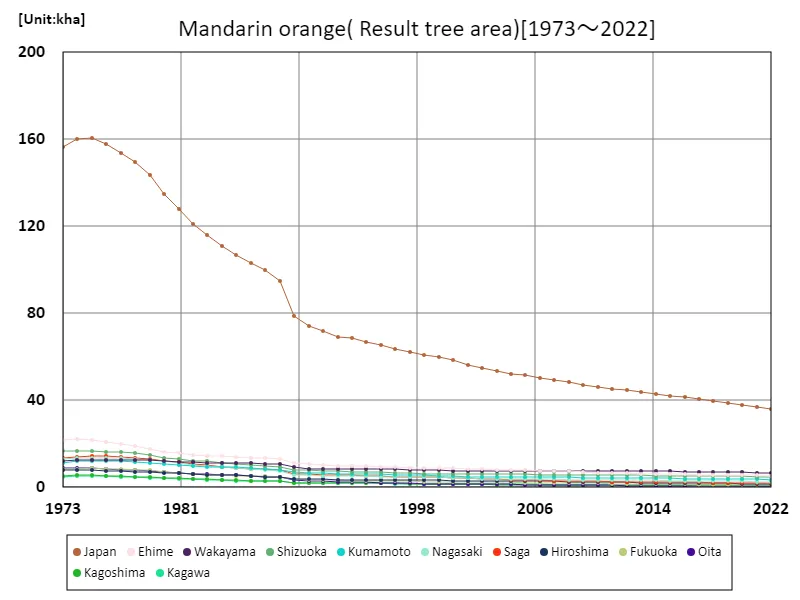

The maximum is 161kha[1975] of Japan, and the current value is about 22.5%
Mandarin fruit tree area (by prefecture).
Looking at the latest 2022 prefecture-by-prefecture data on the area of fruiting mandarin trees in Japan, Wakayama recorded the largest overall, with a record figure of 6.72kha. This figure is significantly higher than past data, strongly suggesting that Wakayama is a major mandarin orange producing area. Even outside of Wakayama, the area of mandarin fruit trees varies from region to region, but overall Wakayama has established itself as the region with the largest area of fruit trees. This is thought to be due to Wakayama’s climatic conditions, soil suitability, and the technical level of farmers. Additionally, the skilled know-how of Wakayama’s mandarin orange farmers and related industries, and their contribution to the local economy, also contribute to the success of mandarin orange cultivation in the region. Overall, this indicates that the fruiting tree area of mandarin oranges, mainly in Wakayama, plays a major role in Japanese mandarin orange agriculture.
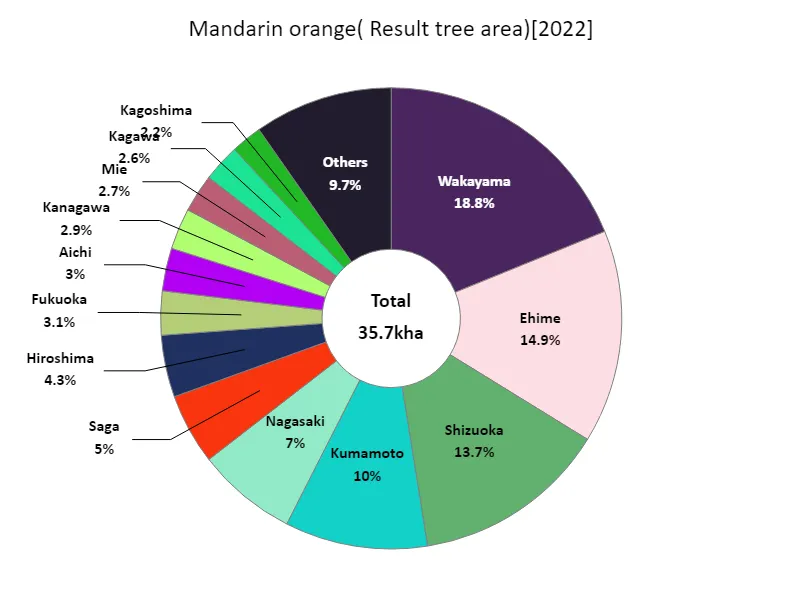

The maximum is 6.72kha of Wakayama, the average is 1.78kha, and the total is 35.7kha
The volume of mandarin oranges shipped.
Looking at the latest 2022 data on Japanese mandarin orange shipments, the largest overall was Wakayama with 138kt, accounting for about a quarter of the overall total of 608kt. Additionally, the average shipping volume was 30.4kt, which is significantly lower than Wakayama’s shipping volume. This suggests that Wakayama is a major shipping area for mandarin oranges. However, it is clear that the total shipping volume does not depend solely on Wakayama’s shipping volume, and mandarin oranges are also shipped from other regions. Furthermore, overall shipments of 608kt indicate that demand for Japanese mandarins remains strong. Mandarins are a fruit that is widely loved both in Japan and overseas, and there appears to be stable demand for them throughout the year. Against this backdrop of demand, it is shown that mandarin orange producing regions, centered around Wakayama, play an important role in Japan’s mandarin orange agriculture.
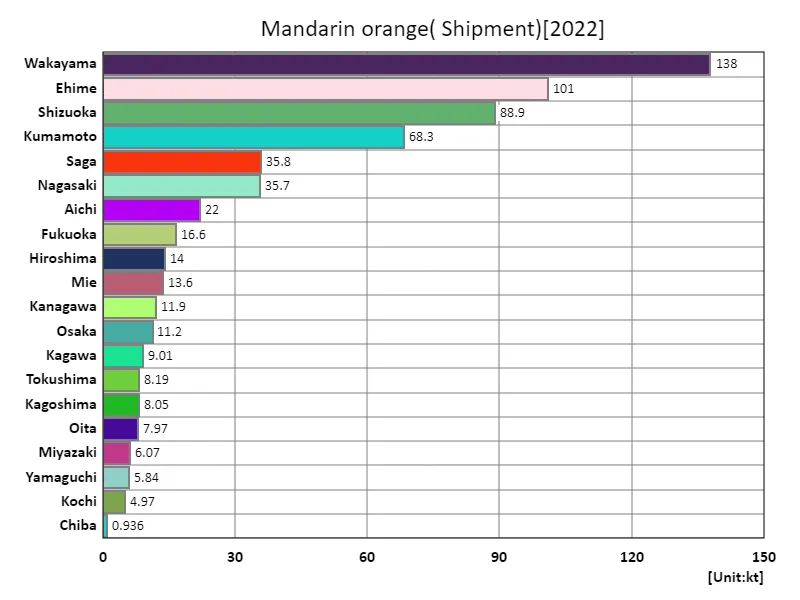

The maximum is 138kt of Wakayama, the average is 30.4kt, and the total is 608kt
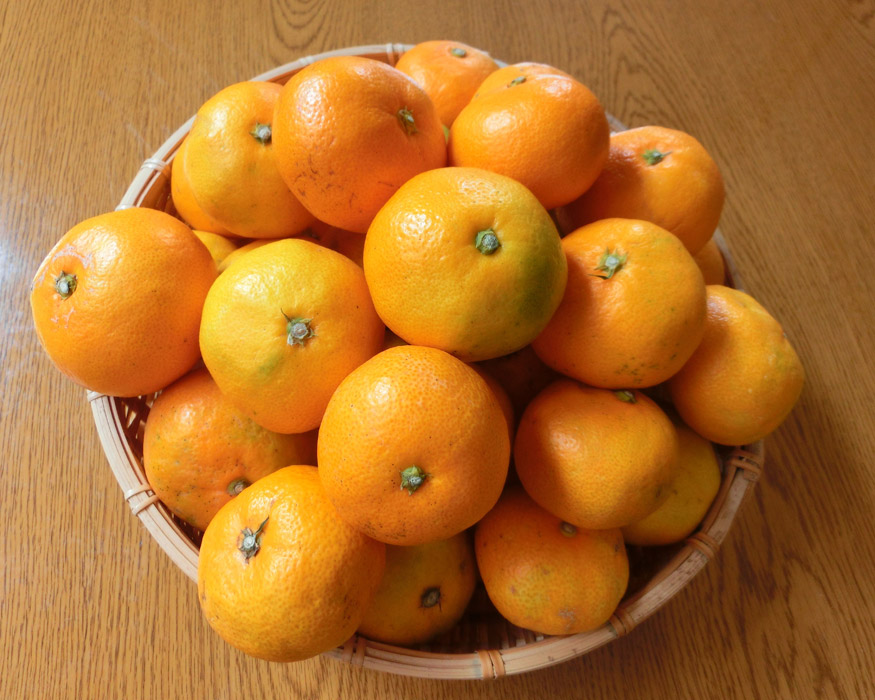


Comments